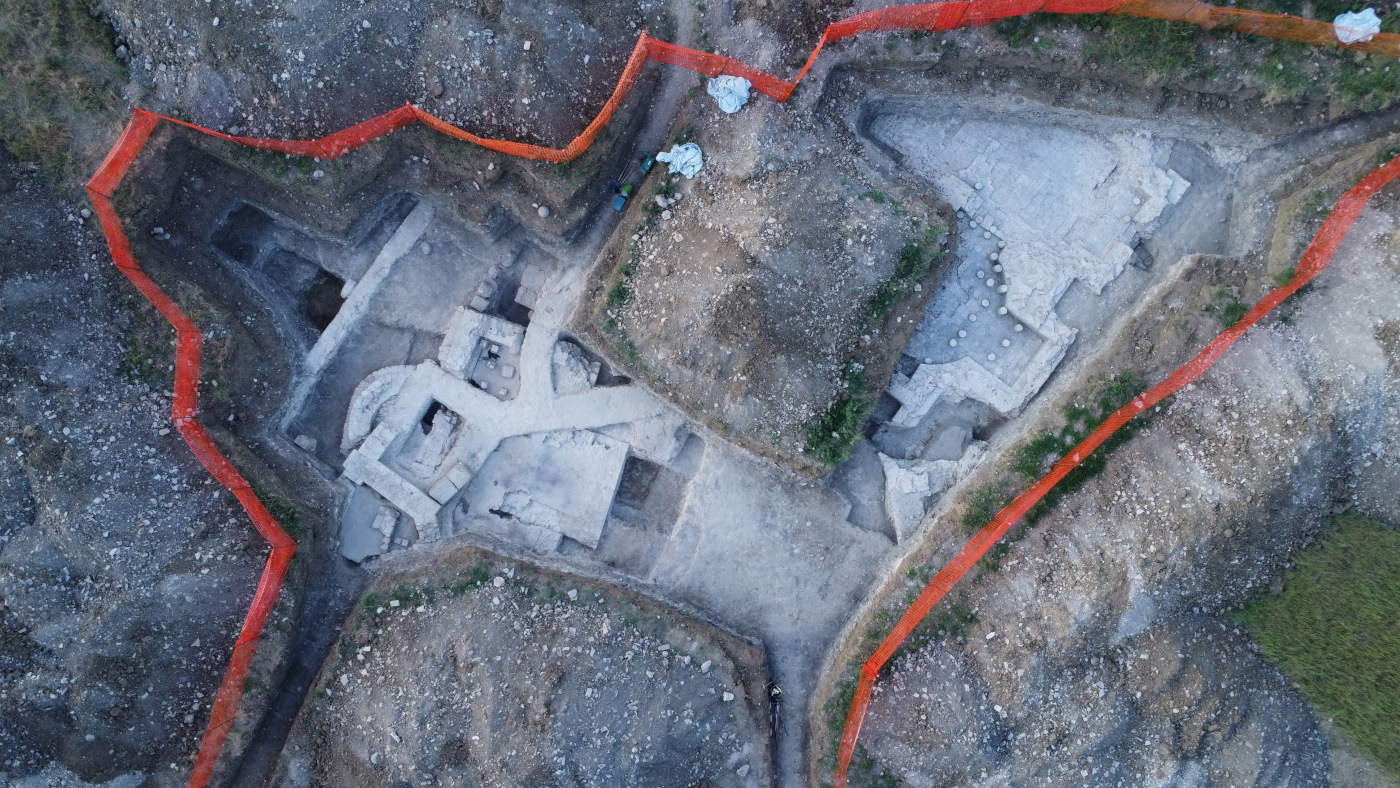Roman villa at Fiumana, University of Parma excavations reveal a complex of extraordinary interest
In recent days the third excavation campaign conducted by theUniversity of Parma at the archaeological site of the Roman villa of Fiumana, in Predappio, ended. The excavations, led by Professor Riccardo Villicich, professor of Archaeological Research Methodology at the Department of Humanities, Social Sciences and Cultural Enterprises, revealed a complex of exceptional interest, confirming the discoveries made in the first two years of research.
Until last year, the information available on the site mainly concerned an urban-rustic villa of the Augustan period, of considerable prestige, as attested by the marble furnishings discovered in the summer of 2023. This villa had probably belonged to a member of the high aristocracy of Forum Livi. In late antique times, the villa was overlaid by a vast complex divided into pavilions. One of these pavilions, called the “Stone Clover” because of its particular architectural structure, had been partially explored during the previous excavation campaign.
This year’s month-and-a-half-long campaign expanded knowledge of the site, rewriting its history. Archaeologists started the extension of the excavation in the second pavilion of the Late Antique villa, located about 120 meters east of the “Stone Clover.” This pavilion had previously been identified as a large bath complex. Among the most significant finds is a purse containing some 30 coins, probably lost by a worker during the construction of the bath pavilion and found in the sealed construction site levels. The coins, dated to the reign of Emperor Valentinian III (425-455 CE), provide a precise dating of the Late Antique villa’s construction phase, placing it in the Placidian period, when Ravenna was the capital of the Western Roman Empire.
The importance of the complex, of which only two buildings have been explored (the residential part and the connecting structures between the various pavilions and peristyles are still missing), is evidenced by the quality of the materials used for the cladding and masonry, including marble from Asia, Greece, Africa and the imperial quarries of Egypt. The innovative architectural solutions adopted for the two pavilions excavated so far indicate a patron of the highest order, probably linked to the court of Ravenna.
In the 5th century, most Roman villas in Italy were abandoned or transformed, and new constructions were very rare. The late antique villa of Fiumana thus represents a unicum in the national archaeological landscape.
Archaeological research conducted in 2024 at the Roman villa in Fiumana uncovered surprising new discoveries. The excavations revealed a complex layering of earlier structures, with an interweaving of masonry, baths, and floors referable to two thermal complexes older than the 5th-century baths, which overlapped with them. These older complexes can be traced one to the Augustan-era villa and the other to a mid-imperial remake. However, perhaps the most fascinating discovery concerns the Republican age: the remains of a basement composed of large stone blocks in opus quadratum suggest that the site was already frequented in ancient times, probably because of the thermal waters in the area. The discovery of a long wall, probably part of a large pool, together with the choice of building three overlapping thermal complexes in the same place, seems to confirm this hypothesis.
The archaeological excavation project of the villa of Fiumana involves three departments of the University of Parma: the Department of Humanities, Social Sciences and Cultural Enterprises, the Department of Chemical, Life and Environmental Sustainability Sciences, and the Department of Mathematical, Physical and Computer Sciences. Researchers involved include Alessandro Chelli, who is in charge of the site’s geomorphology and geophysical prospecting, and Danilo Bersani, Luciana Mantovani, and Laura Fornasini, who conducted crucial laboratory analyses of the ceramic and stone materials found during the excavation.
The fieldwork was coordinated by Marco Gregori, Emanuela Gardini, and Luciana Saviane, with the participation of about 20 female archaeology students from the Universities of Parma, Bologna, and Bari. In addition, students from high schools in Parma (Romagnosi, Marconi and Bertolucci high schools), Mantua (Francesco Gonzaga Institute) and Scandiano (Gobetti High School) also participated, thanks to the PCTO orientation project “An Excavation for All,” now in its third year and directed by Professor Villicich. The successes achieved are the result of close collaboration between the University of Parma, the Municipality of Predappio and the Soprintendenza Archeologia, Belle Arti e Paesaggio for the provinces of Ravenna, Forlì-Cesena and Rimini.


 |
| Roman villa at Fiumana, University of Parma excavations reveal a complex of extraordinary interest |
Warning: the translation into English of the original Italian article was created using automatic tools. We undertake to review all articles, but we do not guarantee the total absence of inaccuracies in the translation due to the program. You can find the original by clicking on the ITA button. If you find any mistake,please contact us.




























